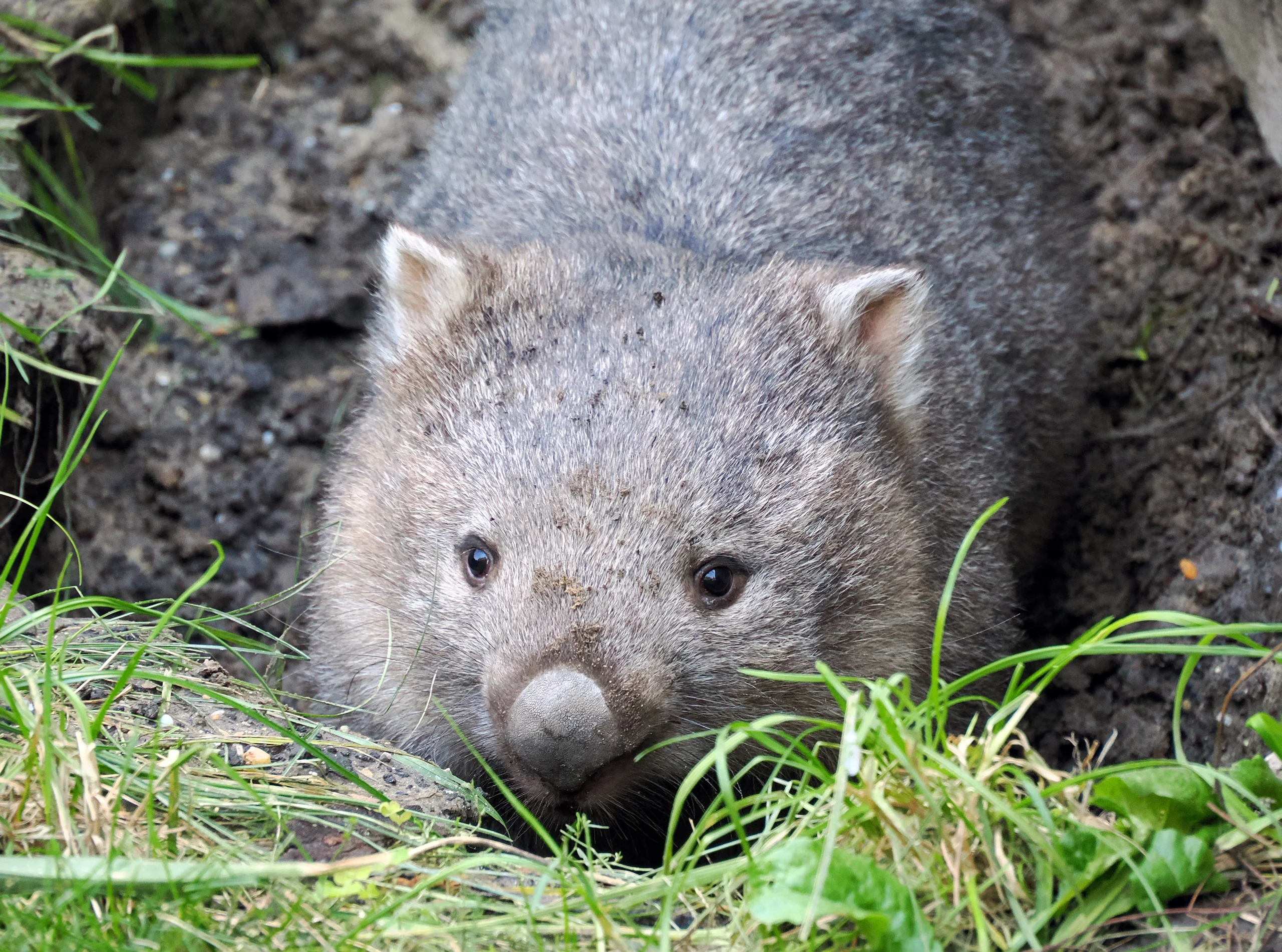We have significantly expanded the exhibition area for wombats. The renovated Wombat Castle provides sufficient space for the older breeding pair who have already raised 6 cubs, as well as for a new, younger breeding pair, and also for their future offsprings.

On Wednesday at noon, we handed over the new Wombat Castle. The marsupials native to Australia, which are rarely seen in zoos, have been continuously exhibited in our Zoo since 2011, but due to regular breeding, we have significantly expanded the habitat handed over 13 years ago. The cost of approximately 20 million HUF was covered by donations received by the Zoo Foundation. In recent months, the Foundation has launched several fundraising campaigns in connection with the new Wombat Castle: among other things, the initiative could be supported by purchasing artistic wombat paw prints or participating in a wombat raffle. At the inauguration of Wombat Castle, Dr. Endre Sós, the director of our Zoo’s Conservation and Animal Health Department, specifically thanked those who contributed to the establishment of Wombat Castle with their support.
Wombats are relatively closely related to koalas within the group of marsupials. They just don’t live in the trees, but at ground level, or in underground cavities. That’s why they are jokingly referred to as “terrestrial koalas”. Unlike kangaroos, but similar to koalas, the wombats’ pouch opens backwards, which is fortunate among other things because it does not fill with soil while digging.
The first wombat arrived at the Budapest Zoo and Botanical Garden in 1897, and they managed to acquire another one in 1911. Later, another wombat also lived in Budapest from 1956 to 1973. After a break of nearly four decades, we started keeping them again in 2011. Among the three wombat species, the audience at our Zoo can see the bare-nosed wombat (Vombatus ursinus). Among domestic zoos, only we have wombats, and in fact, these animals can only be admired in just 9 zoos throughout the whole of Europe.
In Budapest, we not only keep and display wombats, but we also successfully breed them. The breeding pair, Molly and Wally, who arrived in 2011, have had a total of 6 offspring from their union. This can be considered a world-class professional achievement, especially in light of the fact that before the birth of the first wombat baby in Budapest, only 10 wombat babies were born in nearly 100 years in 5 different zoos across Europe.
The expansion and significant transformation of the enclosure and indoor space established in 2011 was necessary because, in addition to the elderly breeding pair, Molly and Wally – who will remain residents of the Zoo – we would also like to bring together a younger breeding pair. Mia, a three-year-old female wombat from Budapest, is paired with Kaoota, a male wombat one year her senior, who is designated to be her future mate. Kaoota, whose name refers to the evening darkness, has already arrived from Copenhagen and was introduced to the public during the handover of the Wombat Castle. The new Wombat Castle consists of 4 external and 4 internal spaces, which can be combined, if necessary, but can also be completely separated, thus it is suitable for accommodating the two breeding pairs, as well as the future offspring of Mia and Kaoota.
In our zoo, there is a great tradition of showcasing Australian wildlife. Already in 1866, the year of our Zoo opening, two types of kangaroos, as well as emus and several parrots represented the fauna of the Australian continent. Today, visitors will find an entire Australian zone with us: this is where the Wombat Castle is located, as well as the Australian House, which was inaugurated in its current form in 2010. Our Zoo’s staff have also achieved significant results in the keeping and presentation of echidnas, which are also considered rarities, alongside wombats. Therefore, those professionals from European zoos who would like to work with wombats or echidnas in the future usually come to us to learn and gain experience. By the way, our Zoo’s medium-term plans also include further developments related to the presentation of Australia’s wildlife. Among other things, we would like to reintroduce koalas and also showcase the Tasmanian devil.